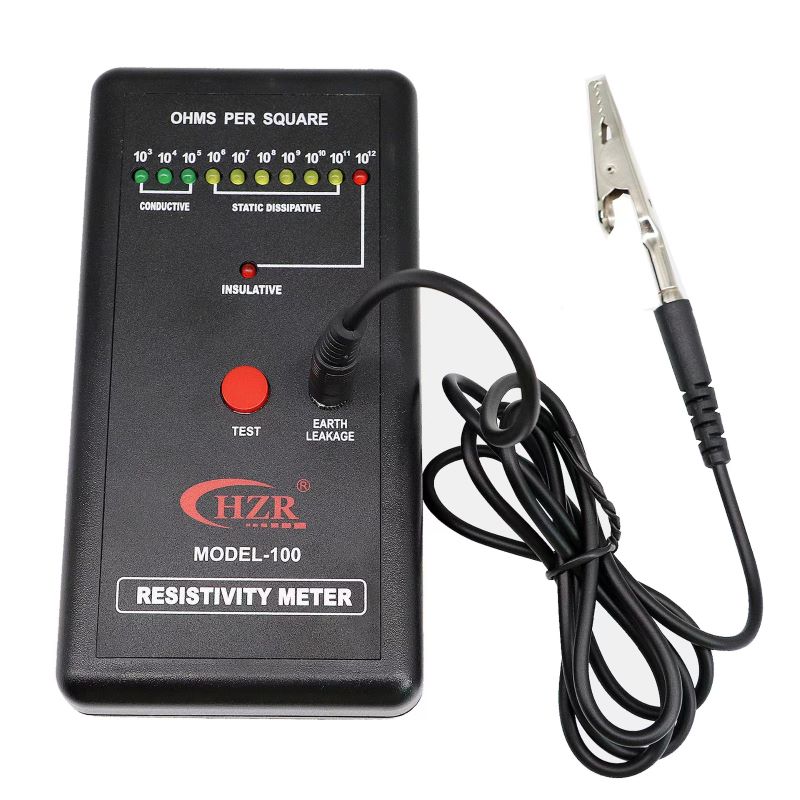FR2204 Surface resistance tester
Products
Products DETAILS
FR2204 Surface resistance tester
Surface Resistance Tester – Description
A Surface Resistance Tester is a specialized instrument used to measure the electrical resistance of surfaces to ensure they meet ESD (Electrostatic Discharge) safety standards. It determines whether a surface is conductive, dissipative, or insulative, making it essential for qualifying materials used in ESD-safe workstations, flooring, packaging, chairs, clothing, and other ESD control items.
This tool is vital in electronics manufacturing, cleanrooms, and quality assurance environments where controlling static buildup is critical.
Key Features
-
Resistance range: Measures surface resistance typically from 10³ to 10¹² ohms, covering conductive, dissipative, and insulative classifications
-
Digital or analog display: Shows resistance values directly or through colored LEDs indicating resistance levels
-
Two-point or concentric ring probe testing: Includes integrated probes or supports external probes for different material types (e.g., soft vs. hard surfaces)
-
Battery or AC powered: Portable handheld models use batteries, while lab-grade versions may include AC options
-
Lightweight and portable: Ideal for field inspections or mobile QA checks
-
ESD standards compliant: Meets industry norms like ANSI/ESD STM11.11, STM11.12, and STM97.1, depending on the model
-
Built-in electrodes: Some testers have built-in 5 lb (2.27 kg) electrodes to standardize measurements over large areas
-
Auto power-off: Saves battery during field use
Common Applications
-
Workstation surfaces: Verifies resistance of ESD mats, tables, and bench tops to ensure static dissipative performance
-
Flooring systems: Tests ESD flooring tiles, epoxy, or floor mats to ensure effective grounding
-
ESD packaging: Checks surface resistance of shielding bags, containers, trays, and boxes
-
Chairs and seating: Measures resistance of chair wheels, arms, and seats used in ESD-protected areas
-
Garments and gloves: Evaluates lab coats, wrist straps, gloves, and shoe coverings for dissipative properties
-
Tools and accessories: Used to check tools, bins, and storage items within static-sensitive environments
Benefits
-
Accurate classification: Identifies whether a surface is conductive (<10⁵ ohms), dissipative (10⁵ to <10¹¹ ohms), or insulative (≥10¹¹ ohms)
-
Ensures ESD compliance: Helps maintain ESD control plans and ensure environments meet industry safety standards
-
Prevents product damage: Reduces risk of electrostatic discharge damaging sensitive electronic components
-
Supports audits and certifications: Provides documented proof of compliance with ESD safety protocols
-
Simple operation: Easy-to-use interface allows for quick testing and interpretation by non-technical personnel
-
Portable and versatile: Lightweight models are ideal for daily checks, while advanced units can be used for in-depth lab analysis





